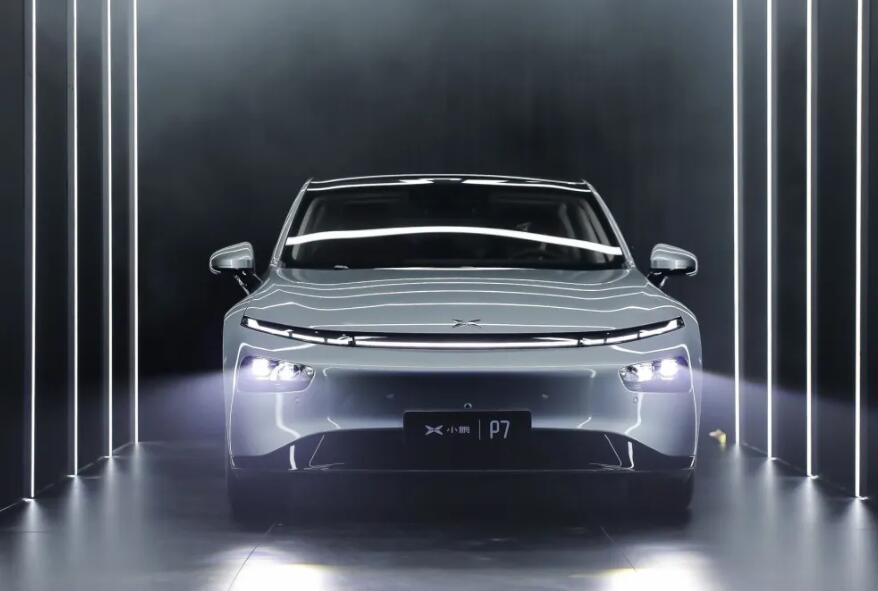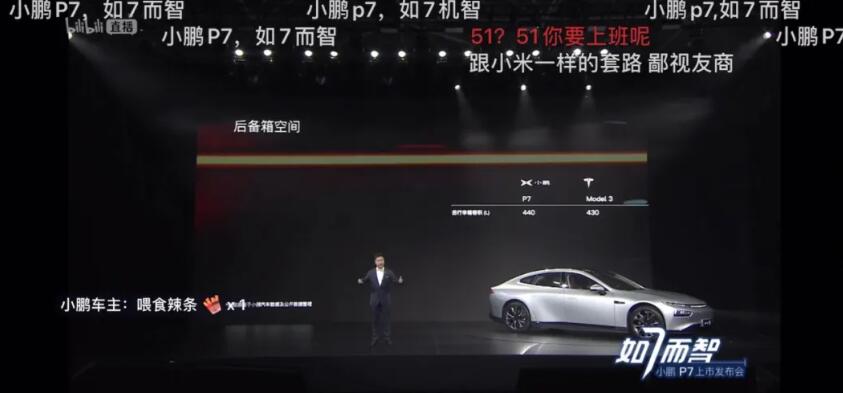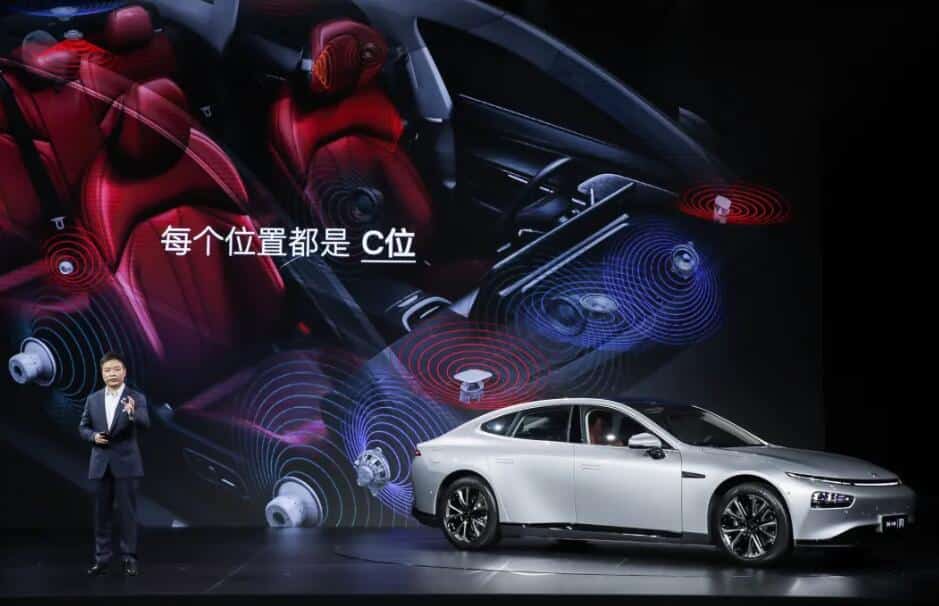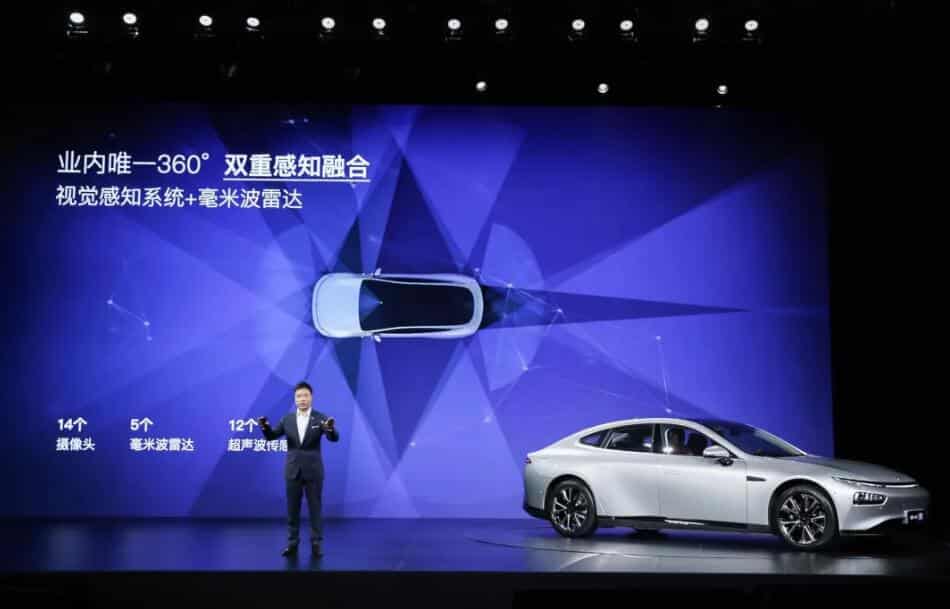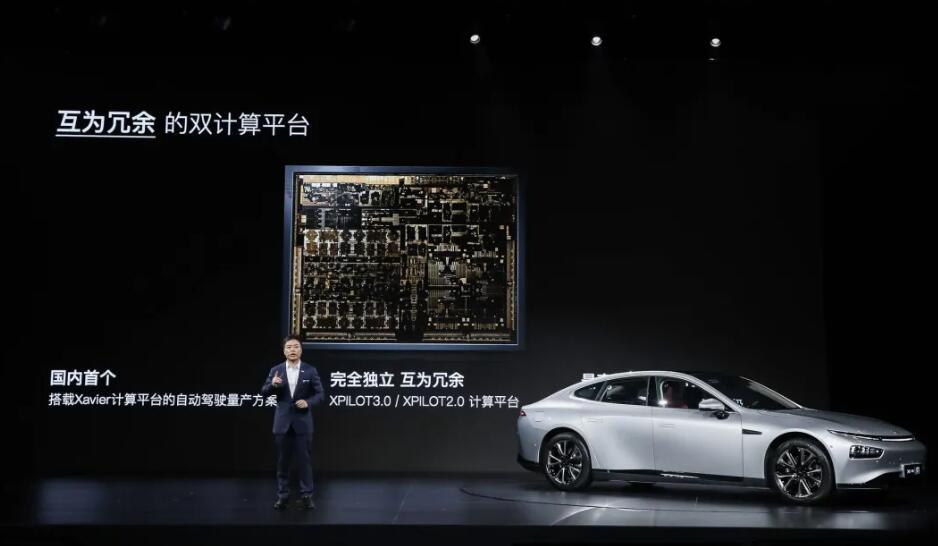Last week's launch of the Xpeng P7 deserves to be credited in the annals of car circles.
It breaks a particularly plastic etiquette among car companies, treating direct competitors head-on and banging Tesla.
Rarely, the P7 also managed to implement a more comprehensive sling.
Presumably, as He Xiaopeng opens, "You need a different gene to make a different product." Born not to walk the walk, amazing, amazing.
Some friends are not very much in agreement with this kind of banging porcelain walking position, feel that the forced is not high enough, the pattern is not big enough; the product looks like a good product. But to touch, is to be unconfident; there is no need to bend over and blindly touch the weakling beneath you when you truly stand at the top of the chain of contempt for the slug.
It won't be long before this straight-arrowed peng-style killing spree is widely replicated in the car world.
Of course, to the P7 such an extravagant class, is to have some level of P7's bumper watch, not to find dead ends to rub on the outside, but also are more hardcore direct impact.
He Xiaopeng says the P7 will redefine the standard of "good" whether it's electric, automotive, or smart.
On the electric level, for example, it's super long. This will involve some dangerous claims that are on the edge of advertising law (e.g. "China's longest running smart car").
The longest version has a range of 706 km, which is already about the same as the range of some fueled cars with one tank of gas.
A comparison of the P7 engineering car and the imported long range Model 3 made by New Outdoors in February this year was shown at the press conference. The range is calibrated for NEDC, 706 km for the former and 664 km for the latter.
Everyone ran in the same road and temperature conditions, all with the air conditioning turned up to 24 degrees, and the P7 had an actual range of 567.1 km (about 80.3% of NEDC range), while the Model 3 had 508.8 km (about 76.6% of NEDC range).
Although it's a bit of a bully to compare engineering cars to other people's larger goods, it doesn't prevent He Xiaopeng from "proudly announcing that the P7 has brought China's smart electric cars into the era of 700+ pure electricity"
The words are really swollen, and the connotations really have some epicness to them. This range, coupled with a 10-minute charge to return 120 kilometers of blood, and a fast charge (30%-80%) to return 353 kilometers of blood in 31 minutes at the earliest, means that the P7's use of the scene, can be solidly out of the same city, to cross the province. This is a big step across the racial discrimination against electric cars.
The P7's small goal is, "not only to get you far, but also to get you running good and cool." Another media review was shown at the launch, comparing the performance of the P7 with the Model S, Porsche Panamera and BMW M4. Please allow us to go directly to the table.
He Xiaopeng concludes that we are absolutely confident that the P7 can compete with a million-class coupe than performance.
There's nothing wrong with that under the real weight of the table - although those who know their stuff will surely say that it doesn't mean it's fun to run, that handling is an art, and that it's superficial to deconstruct the driving of a million coupes into such six numbers in a single direction.
The actual needs of most people are, I'm afraid, a little more superficial than these six values.
At the automotive level, the implication of "total repression" is even stronger.
He Xiaopeng says that even though he designed it with his team more than three years ago, he is still amazed every time he sees the P7. It's a cross between aesthetics and mathematics, "more se-xy than S.3.X.Y."
For example, space, He Xiaopeng said, compared to Model 3, Model S, in the front and rear rows each sitting 1m8 slugger, the P7 rear row legroom can reach 179mm, is the most spacious.
With 440L of trunk volume for the P7 and 430L for the Model 3; let down the rear, the extended trunk volume for the P7 is 915L and 865L for the Model 3, "50L more than the Model 3, the advantage is clear." In addition, the P7 has a front boot with a capacity of 66L.
The P7, for example, comes standard with a panoramic glass roof with Saint-Gobain low-e glass, which has an energy transmittance of less than 20%, "smaller than Model 3" (adding that the supplier of Model 3 is also Saint-Gobain); its UV transmittance is less than 0.1%, so you don't have to worry about getting tanned.
In addition, there are a series of details that can be frantically tried on the edge of advertising law, from the first frameless doors of a domestic coupe, to the first hidden charging port with a key-operated remote control, to a touchscreen with the highest PPI (pixel density), all fancying their own Chen Duxiu stance.
And on the smart side of the soul, the P7 is also badly made.
First on the operating system, its Xmart OS 2.0 iteration gives it a cyberpunk feel.
The most intuitive ones, such as the new generation of voice assistants, Little P, are now 3Dized from the previous form of owed design fees, and will be more personalized in the future, supporting the customization of images and wake-up words.
Iterations have also taken place on the core competencies of voice interaction. Functionally, 90% of the future self-research operations can be done by voice, and operationally, you can listen continuously, without repeated waking up or interrupting at any time, and there is a small P touch button in every position, which is not available in other cars.
In addition, P7 also supports both the app store and Alipay applet ecosystem, and currently has over 100 apps and services.
It's worth noting that the vehicle's hardware capabilities are open to third-party apps in the safety slot, such as the steering wheel you can use to play the Wild Ride game.
This system of Android in the car world is something that no one else is doing.
More importantly, of course, is XPILOT 3.0, the Autopilot Assist system, which most others are not doing, or have yet to perfect, and currently has no second standard in the industry other than Tesla.
The recent dispute between Tesla and Xpeng must have been a bit of anecdotal evidence, and the speculation is too unproductive to go into detail here.
Just a few basic cognitions to share, the vast majority of the world that eventually survives is still Machiavellian, and corporations are exercising both rights for their own purposes.
So, the self-fucking five rushed in with a moral machete on their backs, no matter how they stand, they may become free water army, very unlikely, might as well give this article a reward.
Let's take a look at where the Xpeng P7's bulls are blowing. Its hardest-core material foundation is, "the strongest autopilot hardware architecture in a production car," which primarily includes perception, positioning, and computing.
The P7's perception, using a visual perception system + millimeter wave radar scheme (with 14 cameras, 5 millimeter wave radars and 12 ultrasonic radars), is the industry's only 360 degree dual perception fusion system.
Because different capabilities can be used in different scenarios, it is more secure and stable than a single scenario.
For example, the camera alone will be ineffective in rain and haze conditions, while the P7 has millimeter-wave radar and "twice the resolution of a Tesla with a detection range of over 200 meters".
The P7 is also positioned as "the most powerful mass-produced model to date", with high precision maps up to the decimeter level.
Heavy high-precision positioning hardware, global positioning accuracy up to the centimeter level; instant positioning and map building technology, relative positioning accuracy less than 0.3% - these Tesla do not have, people only use vision.
So P7 will be safer and more stable on overpasses, tunnels, and in bad weather.
The P7's computing, based on the NVIDIA Xavier computing platform, can reach 30 trillion operations per second, 12 times more powerful than the EyeQ4 platform.
The P7 is the first mass-produced Autopilot solution in China to use this platform.
Moreover, there are two XPILOT 3.0 and XPILOT 2.0 computing platforms, which are completely independent in hardware and run simultaneously, redundant with each other for real-time security.
What this architecture can do, He Xiaopeng cites three scenarios.
First, on the highway, after opening the automatic assisted driving, you can take off, P7 can enter and exit the ramp, automatic driving, determine the speed of automatic overtaking, determine the traffic flow automatically switch line, automatically switch the highway, automatically adjust according to the road speed limit, according to the construction scene to automatically avoid and so on.
This is not yet available on a production vehicle in China.
Second, parking memory parking. Xpeng says it's the first autonomous parking system that's mass-producible and doesn't rely on parking lot modifications.
The third is a small fun feature, the red light pass assist, P7 can recognize the second reading light, round light, arrow light and so on, and then make corresponding prompts to the driver.
There are some other cool features mentioned in the release, like the 100% ECU upgrade (you can optimize the air conditioning, for example, and then the range via remote OTA) - none of which are available yet.
Like Autopilot Assist, the hardware is in, but functionally, it needs to be delivered in the third month and sixth month after delivery, through two OTAs, to be realized. he Xiaopeng said that in the meantime, he wants to do more.
First, it is hoped that the P7 will complete the nationwide highway coverage test.
The second is to design a written and road test methodology for Xpeng XPilot 3.0 for drivers to learn.
The third one is the visual assist system that is doing automatic assisted driving, which lets you know in advance how your P7 is going to cut the line and how to overtake the car.
Depending on the time of delivery, full realization will probably come by the end of the year. After that, 2021 also buried new satellites, like low-speed following, (that is, on city roads where cars are going 5-30 km/h and you can automatically follow the car in front, but!!!! Won't get ramped up.)
He Xiaopeng says he is very confident that the P7 can do the best autopilot in China.
Whether it's the best or not remains to be seen; but the P7 is definitely a more premium Xpeng compared to itself, and a more expensive Xpeng. Its price tag is 229,900 yuan to 349,900 yuan. This price, like Tesla's, is a "soft and hard split", and if you want XPilot 3.0, you have to pay a separate fee, the standard price is 36,000 yuan.
The prices in the table above, are all subsidized. Combined with the recently established New Energy New Deal, the P7 has at least two top-of-the-line models above 300,000, after which subsidies are to be pulled.
But this price, by sight, will not come down, because the cost looks very difficult to reduce.
Xpeng uses a number of "top-notch" vendors for its hardware, as well as some custom purchases.
For example, the ultra-thin high-energy battery module jointly developed with CATL; one of the most powerful permanent magnet synchronous motors in China, equipped with the German Infineon 950IGBT module; the latest generation of Bosch braking energy recovery system; and this chip and that chip, etc.
He Xiaopeng revealed that the P7 car costs 3 billion yuan to develop; there is also about 700 million yuan a year invested in software development. "Self-study is expensive. We did everything except not make chips."
Last year they managed to raise a Series C, or $400 million.
He Xiaopeng said that the attitude of this investor is both supportive and full of question marks.
But they still want to "do a little something that will make Chinese entrepreneurs change the world. Even if it only changes the world a little bit, we have to work on it."
Long-time EV watchers, such as Garage 42 and Electric Planet, are raving about the P7.
A Chinese brand with a full range of products to rival Tesla in terms of strength, and a full range of cheap prices, what more do you need a bike.
But the problem is that this segment of the population, while vocal online, is instead in the minority when it comes to actual consumption.
Even if they genuinely think that P7 is good and good, after going back and forth and reviewing, it is very likely that they will eventually buy Tesla. It's the same as Acura finishing Xiaomi and a gorgeous turnaround to buy Apple.
Because the nature of consumption, not just the product itself. Product-wise in particular, the P7 versus the Model 3/S is actually a Schrödinger suppression; but brand-wise, Tesla is a materialistic backlash.
Xpeng is not ignorant. They are desperately trying to reach more people, like women, with this launch.
After the official launch, they invited Rebecca to come together and discuss the P7, which is the only reason I can think of for this crossover.
But judging by the fact that Rebecca spent most of her time just sitting in the middle quietly smiling, the P7's appeal in the women's market has yet to grow.

